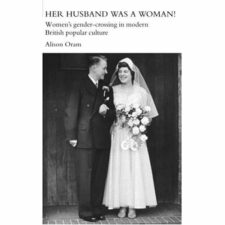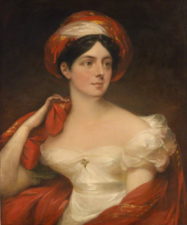As we celebrate Mother’s Day in April 2011, it is salutary to remember women in the past who were single mums struggling to support their children while engaged in public work. Emmeline Pankhurst, the leader of the suffragette movement in Edwardian Britain, was one such example.
In 1903, Emmeline together with a small number of other socialist women in Manchester, had founded the Women’s Social and Political Union (WSPU), the most notorious of the groupings campaigning for the parliamentary vote for women. For the next eleven years, until the outbreak of the First World War in 1914, she and her eldest daughter Christabel led the ‘militant’ suffragette campaign. But what is often forgotten is that when Emmeline’s husband Richard died, in 1898, she became an impoverished single parent with four dependent children to support – the seventeen-year-old Christabel, sixteen-year-old Sylvia, thirteen-year-old Adela, and eight-year old Harry. What I am going to concentrate upon here is the story of Harry.
During the turbulent suffrage years, Emmeline felt a particular responsibility for the gentle Harry, the youngest of her children, a sensitive boy who lived with her in their rented Manchester home. However, after she moved to London in 1907, in order to concentrate full time on the suffrage cause, he rarely stayed with his mother since she never had a permanent address. Reliant on the £200- £300 a year that she received as the leader and main speaker of the WSPU, Emmeline now travelled up an down the country, trying to convert people to the women’s cause. She lived in hotels or flats that were rented or lent by friends. At this natural break in her life, Emmeline made arrangements for the seventeen-year-old Harry’s future.
Emmeline decided that Harry, who was not academically gifted, would be better able to support himself in life if he learnt a trade, and so she apprenticed him to a builder in Glasgow. But the builder went bankrupt, and early in 1908 Harry returned to London, staying at Sylvia’s lodgings. Christabel suggested that the delicate Harry might fare better with an indoor job, as a secretary. Emmeline readily embraced the idea, saying she would pay for classes in shorthand and typing for her son, and even give him a weekly allowance of £1 per week. But Harry had little interest in studying. He much preferred, like his sisters, the excitement and earnestness of the suffrage and socialist movements. When he lectured for the Independent Labour Party on the virtues of ‘back to the land’ ideals’, Sylvia suggested to her mother that Harry should have some experience of agriculture before speaking about it. The anxious Emmeline, keen to secure vocational training for her boy, sought the advice of Joseph Fels, a Jewish American who had arrived in Britain to pioneer farm colonies. Thinking that the fresh country air would be beneficial for her son, Emmeline arranged for Harry to be apprenticed to Fels’ farm in Essex.
Emmeline’s hopes of economic security for her son were suddenly dashed when, in April 1909, he became ill with serious inflammation of the bladder. The worried mother brought her son back to London, to the nursing home of two suffragette friends, Gertrude Townend and Catherine Pine. Here Harry was cared for and attended by Dr. Mills to whom Emmeline had to pay medical bills of £4. 4s. Soon she was back again in the provinces, campaigning for the vote, but also making sure that she spent some brief spells in London where she could see her boy. She was delighted when Harry improved enough to accompany her to the WSPU grand bazaar, held in Knightsbridge from 13- 26 May. ‘What a charming boy’, people came up to her and said. ‘I did not know you had a son.’ As he seemed fully recovered, Harry returned to Fels’ farm.
In the days before a National Health Service, the not wealthy Emmeline realised that she needed to earn more money to secure Harry’s future, and so she planned a paid lecture tour to America that autumn. But just before she was due to leave, Harry was struck down with inflammation of the spinal cord and was paralysed from the waist down. Although the sight of her sick son tore at Emmeline’s heart, she felt she had no option but to go ahead with her tour since her son might be an invalid for life. And so she went, leaving Harry under the skilled care of Dr. Mills and nurses Townend and Pine.
It was Emmeline’s first visit to the USA but her excitement at being in that country was dulled by the constant worry about Harry. In a speech in Boston, she spoke not only about women’s suffrage but also about her sick son. ‘As the youngest in her family, he has always been “her baby”, and though the doctor assured her it would be all right for her to go, she was in acute anxiety till she got the good news he was better.’
But it was not to be. When Emmeline returned to England she heard the dreadful news that Harry would never walk again, and that his future was bleak. Unknown to his mother, Harry had fallen in love with Helen Craggs, a young woman he had met when by-election campaigning in Manchester the previous year. And Harry told Sylvia, not their mother, that he longed to see Helen again. Soon the young woman was at Harry’s bedside, telling him that she loved him too. But for the grief-stricken Emmeline, possessive of her only surviving son, the sight of the growing tenderness between the two young people was too much to bear. She chided Sylvia for acting on her own initiative. This young woman was taking from her the last precious moments with her boy.
Emmeline was at Harry’s bedside when he died on 5 January 1910. Inconsolable and dejected, she used her work as a prop to help her cope with her deep sadness. Five days after Harry’s funeral, she travelled to Manchester to speak at a scheduled meeting. ‘Surely every mother here knows that I would rather be quiet to-night, by my own fireside with my sad thoughts, and it is only a sense of my great responsibility and duty in this campaign that has urged me to appear’, she said to her audience. But despite her public composure, Emmeline was struggling privately to control her heartbreak. ‘Work’, she later commented to suffragette Elizabeth Robins, ‘is the only cure for the thoughts I find so uncontrollable just now.’
Emmeline Pankhurst, a single mum, faced the conflicts that so many single mothers without a secure income have faced throughout the ages; dilemmas that were magnified because she was a feminist public figure, fighting for a cause in which she passionately believed in a society that regarded women as second-class citizens.
June Purvis is a historian at the University of Portsmouth. The full text of this article is published in Lone Mother: Special Issue of Women’s History Review, edited by Tanya Evans and Pat Thane, Vol 20, No 1, February 2011

